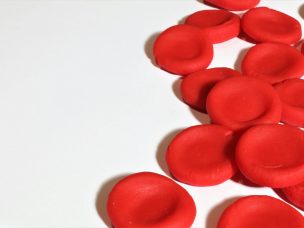Novel osmoscan-derived biomarkers Omin-width and Omax-width exhibited correlations with RDW, hyperchromic cells (Omax-width), OFT outcomes (Omin-width), and clinical severity in a monocenter retrospective cohort study.
Hereditary spherocytosis (HS) is characterized by membrane instability of red blood cells (RBCs) and resultant instability and loss of the cell membrane due to pathogenic variants in genes involved in RBC cytoskeletal and transmembrane protein synthesis. In this disorder, the RBCs transform into poorly deformable spherocytes and undergo premature destruction in the spleen.
This study aimed to assess the correlation between the diagnostic outcome parameters and the severity of disease among HS patients. The study findings indicate that novel osmoscan-derived biomarkers correlate with disease severity and are associated with red cell width (RDW), hyperchromic cells, and osmotic fragility test (OFT) results. This study was presented as a poster at the 65th American Society of Hematology Annual Meeting and Exposition.
Assessment of Disease Biomarkers
In this retrospective monocenter study, the authors included patients with HS and conducted various laboratory tests at baseline, including routine hematological parameters, OFT, osmotic gradient ektacytometry, and the eosin-5’-maleimide (EMA) binding test. Next-generation sequencing gene analysis was employed for molecular diagnosis.
Baseline Characteristics
The study included a total of 82 non-splenectomized patients with HS. Among these patients, 35 had mild HS, and 47 had moderate–severe disease. The genotype and demographics of the patients were not significantly different.
Correlations of Diagnostic Outcome Parameters and Disease Severity
The reticulocyte count and EImax were found to be correlated with the clinical severity of the disease. There was a moderate correlation between HS disease severity and RDW, indicating that more severe clinical disease is seen in greater RBC heterogeneity. The EMA binding test suggested greater membrane loss in patients with severe disease.
Osmoscan Parameters
EIO290, or elongation index at physiologic isotonicity, and EImax were also correlated with the severity of disease in HS patients. The Omin-width had a correlation with RDW, OFT results, and clinical severity of HS, whereas Omax-width was correlated with the percentage of hyperchromic cells and clinical severity of the disease.
Source
Richard, V. W. (2023, December 10). Novel biomarkers for assessing clinical severity in hereditary spherocytosis – application of routine and advanced diagnostic tests. https://ash.confex.com/ash/2023/webprogram/Paper189034.html










